By-Mail Voting 101: A “How-To” Explainer
Eddie Perez
Thinking about voting by-mail?
You may be wondering:
- How do I get a by-mail ballot?
- How can I make sure to complete it correctly?
- Should I return it through the US Postal Service (USPS), or through an official elections drop box?
- What do I need to know about signatures and validation, so that my ballot gets counted?
- And how is this kept secure, anyway?
It’s all here, in this article. Let’s begin.
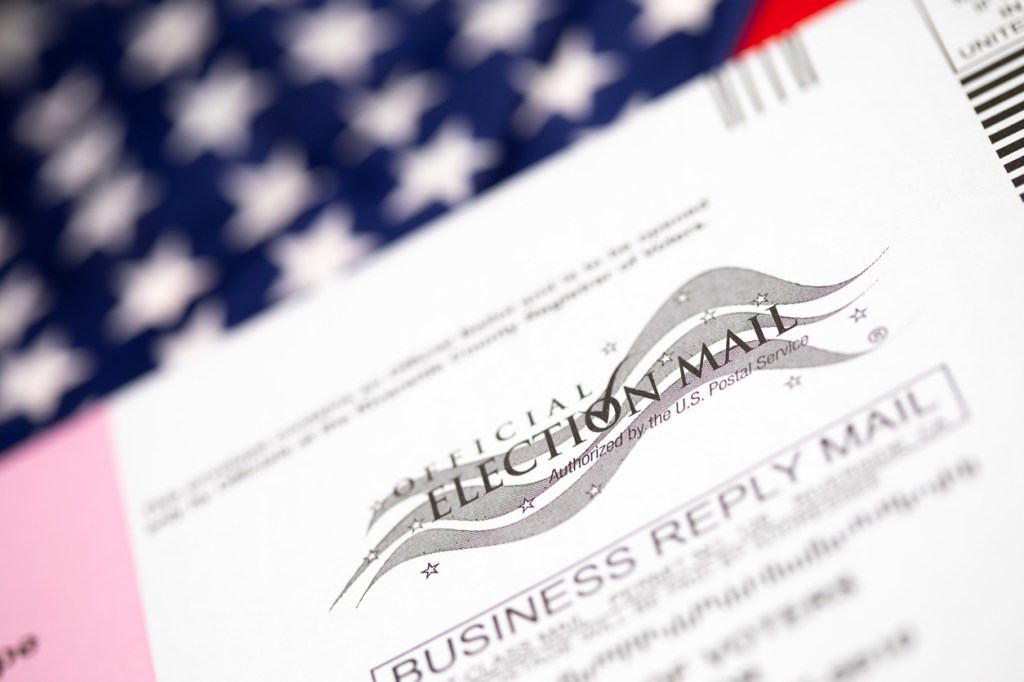
First, a Level-set: By-Mail Voting is Secure and Bipartisan
Voting by-mail is a secure voting method, and it’s not “new;” in fact, it has been used in various forms dating all the way back to the Civil War.
Furthermore, despite what some politicians say over the airwaves, by-mail voting also has broad bipartisan support, if you look at the laws and rules that are actually implemented. Indeed, the untold story is that while online personalities and the national parties engage in debates, attacks, and counterattacks about by-mail voting, governors and election officials from both parties (and in most states!) have been methodically expanding access to by-mail voting for years.
Contact Your Local Office for By-Mail Voting Rules In Your Area
Different states have different rules and protocols for by-mail ballots. This article describes the most common practices. To get details for your area, contact your local election office. (It’s usually the County or Municipal Clerk, the Auditor, or an Elections Supervisor).
Time is of the Essence
If you plan on using a by-mail ballot, here are some important top-line considerations:
- Check your voter registration early, and especially your mailing address, because that’s where your by-mail ballot “kit” will be sent (only after your eligibility to vote is verified).
- If you will vote by-mail, request your ballot early.
- Return your by-mail ballot early; ideally, at least 7-10 days before the legal deadline in your state.
Getting a By-Mail Ballot
Only eight states (CA, CO, HI, NV, OR, VT, WA UT) and the District of Columbia automatically send blank by-mail ballots to all registered voters.
Everywhere else, you’ll need to submit a request for a by-mail ballot; most local election offices have easy online portals for this purpose. Terminology varies in different states, for legal reasons associated with eligibility. Some websites might say, for example, “request an absentee ballot” and others might simply say “vote by mail.”
Eligibility rules to get a by-mail ballot (instead of voting in-person) vary from state to state. A few states are restrictive, requiring an “excuse” like illness, disability or being overseas. In many states, if you are a registered voter, all you need to do is ask for a by-mail ballot (“no-excuse”).
Your By-Mail Ballot “Kit”
Your local elections office will send a by-mail ballot only after it verifies your eligibility to vote (i.e. registration). Then, your by-mail ballot “kit” typically includes (at least):
- Instructions
- A blank ballot for your precinct/ballot style
- An inner privacy sleeve
- An outer return envelope
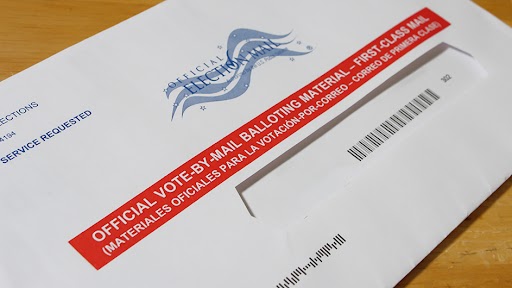
Completing Your By-Mail Ballot
When you fill out a by-mail ballot, be sure to follow the instructions exactly.
- Completely fill in ovals or check-boxes appropriately
- Follow instructions for the appropriate type of writing instrument to use. Avoid using heavy markers that bleed through
- Follow instructions about ink color! (and especially prohibited colors, which scanners may not correctly identify)
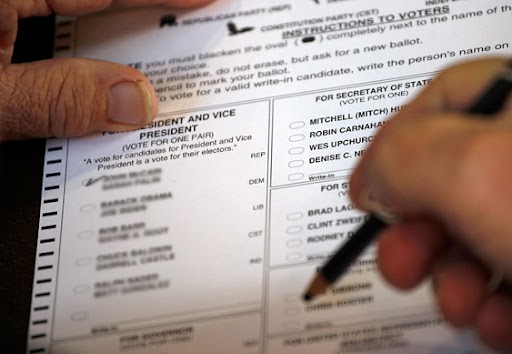
Signature
When you complete a by-mail ballot, your signature is absolutely essential.
The way you sign your name on your ballot return envelope is typically compared to your signature in your voter registration or DMV record, before the ballot can be validated for counting.
Sign only the return envelope, in accordance with instructions, not the ballot itself! In some states, laws regarding voter privacy could cause a ballot to be disqualified if it has any identifying marks on it; ballots must remain anonymized.
Finally, if applicable, also complete the date on your return envelope – and double-check it. Some states have had to address lawsuits related to the accuracy of the date that the voter writes.
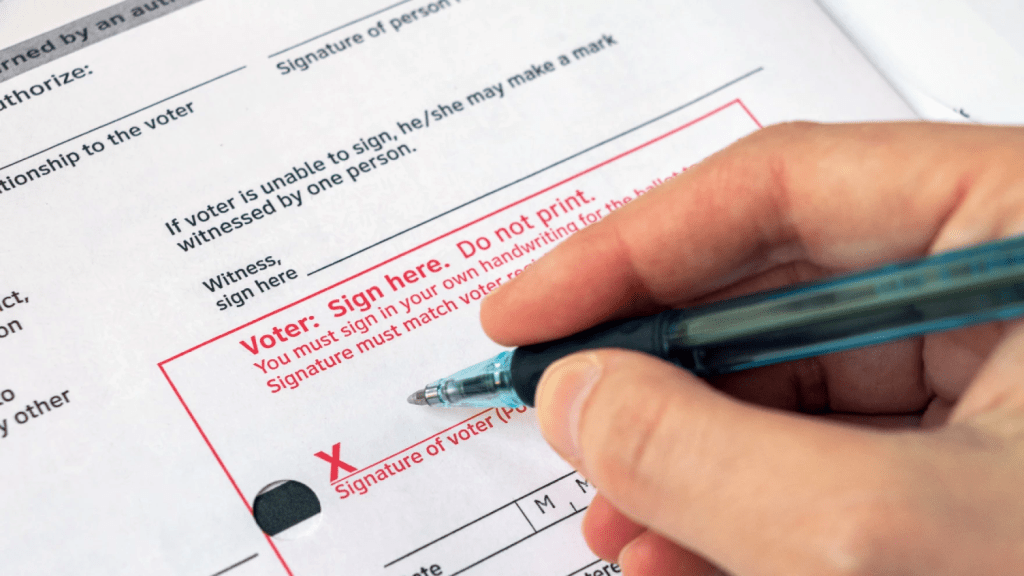
Reviewing or Updating Your Signature On File
If you have concerns about how your signature record might appear (Don’t remember how you signed when you registered to votes? Were you sloppy on your driver’s license? Do you have a disability?), then ask your elections office if there is a way to review or possibly update your signature on file.
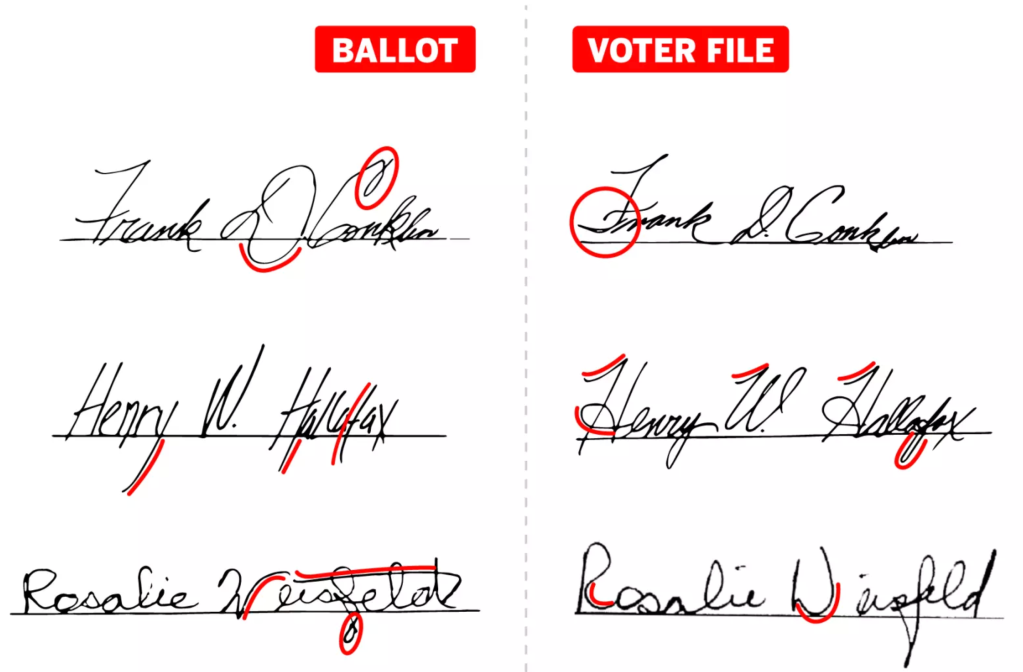
Opportunities to “Cure” a By-Mail Ballot
Before returning your by-mail ballot, you can also ask your local elections office whether they will notify you in case of a signature discrepancy with your mail ballot, and if so, what methods you might have to provide additional information to address (or “cure”) the issue, so your ballot is counted. Procedures related to giving voters an opportunity to cure a signature vary from state to state.
Review: Preparing to Return Your By-Mail Ballot
Before sealing up your by-mail ballot to return it, double-check everything!
- Follow the ballot instructions exactly to mark choices; pay attention to filling in ovals or boxes, and use the recommended writing instrument.
- Your marked ballot goes inside the inner privacy sleeve
- The inner privacy sleeve goes inside the ballot return envelope
- Sign your name on the outer return envelope (not the ballot!)
- If applicable, put the correct date on the return envelope
Returning Your Ballot: USPS or Official Drop Boxes
To return your ballot before deadlines (so it’s counted!), you have choices:
1) US Postal Service, or
2) get to an Official Ballot Drop Box in your locality.
The USPS does herculean work, but some election officials are worried about 2024.
Consider using drop boxes in your locality, to ensure that the local elections office receives your by-mail ballot before legal deadlines. This option also removes any uncertainty you might have about delivery times from USPS.
About Ballot Drop Boxes
Official drop boxes for by-mail ballots are common, and they are secure. If available, election officials can provide you with locations and instructions to look for official marks and logos.
Drop boxes have a variety of security features, including video surveillance, and they are typically monitored 24/7.
Your local election officials collect ballots from drop boxes on a regular basis, subject to strict protocols to protect privacy and to ensure that every ballot is collected. Typically, a variety of locks and tamper-evident seals protect the chain of custody. Bipartisan collection teams are also common.
Be aware that drop boxes for by-mail ballots have been the subject of baseless claims and conspiracy theories in recent years, and some states have politicized their quantity and location. The federal US Election Assistance Commission and the Cybersecurity and Infrastructure Security Agency provide detailed facts about drop boxes and their security.
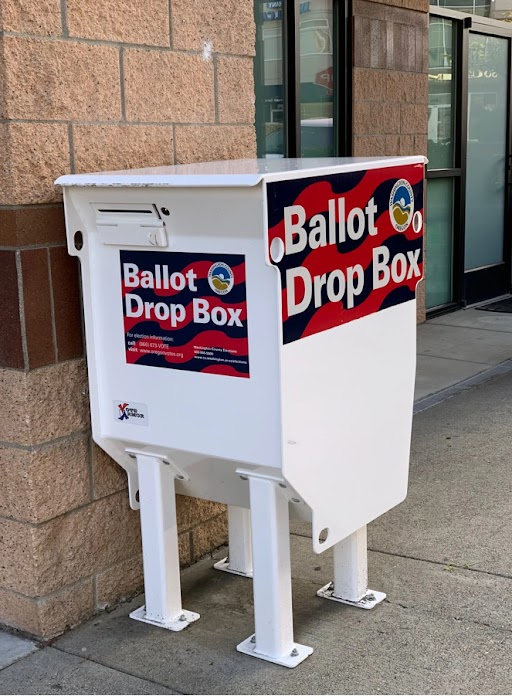
If You Return Your Ballot via the US Postal Service
- Determine whether you need to provide postage
- Ask about postmark requirements/deadlines in your locality; you can always ask the post office to hand-stamp your postmark, just to be sure
- If you are returning your by-mail ballot less than 10 days ahead of Election Day, ask about drop-off or drop-box options instead. It’s safer.
Validating and Counting By-Mail Ballots
Whether by-mail ballots are received in official drop boxes, or through the USPS, ballots that are received in accordance with legal deadlines go through a careful review process to ensure that only ballots that are verified against the voter registration signature of an eligible voter will be opened and counted.
Once the exterior return envelope has been validated, the ballot itself is separated from all other personal voter information before counting. Hence, at the time of scanning and counting, all ballots are anonymous, to preserve privacy.
In 2024, Donald Trump, Elon Musk and their followers are trying to (falsely) attack the security of by-mail ballots. But the reality is that vote-by-mail procedures have multiple layers of security. For example, the outbound distribution of blank by-mail ballots is tightly controlled; the inbound validation of by-mail ballots is tightly controlled; and it’s exceedingly difficult to “counterfeit” ballots without detection (It’s not at all like using a photocopier.)
Finally, there are also very good reasons why it takes time to count and report by-mail ballots, and so-called “spikes” in by-mail votes are normal reflections of how modern vote scanning technology works; they are not indications of so-called “shenanigans in the middle of the night.”
Summary and Conclusion
With every passing week, election officials will get busier and busier, and that means that the longer you wait to obtain and cast your by-mail ballot, the more it creates a “squeeze” and potential problems.
Early action on your part increases the likelihood of success with by-mail voting!
Remember:
- Check your local elections office for detailed procedures about by-mail voting
- Request your by-mail ballot early
- Follow instructions to complete your ballot exactly
- Pay special attention to your signature and any applicable dates on your ballot return envelope
- Return your by-mail ballot early
- Use drop boxes for by-mail ballots if you have concerns about USPS mail; contact your local election office to ask about drop-off options
- If you return your ballot via USPS, be sure to include proper postage, and if it’s less than 7-10 days before your legal deadlines, using a drop box at your local elections office is a safer choice.
- Find out if election officials in your locality will notify you of any discrepancies and provide opportunities to “cure” a signature
And when you’ve mastered this checklist, give yourself a pat on the back.
You just participated in democracy and made your voice heard!



